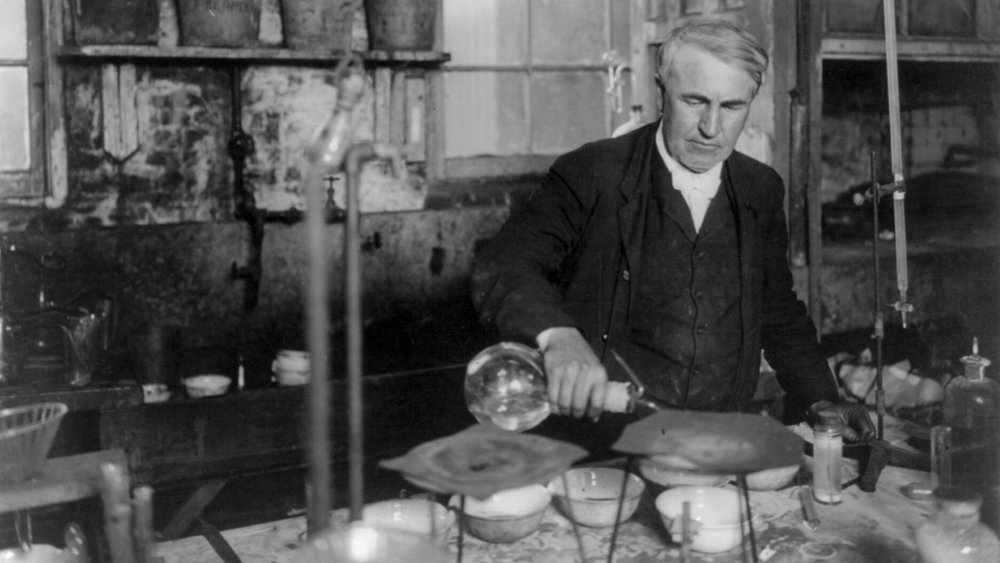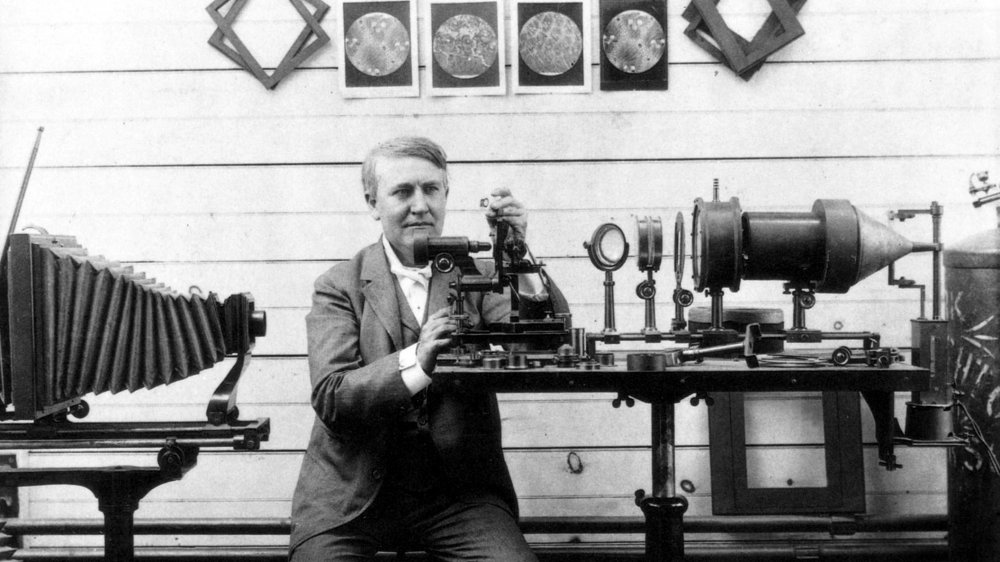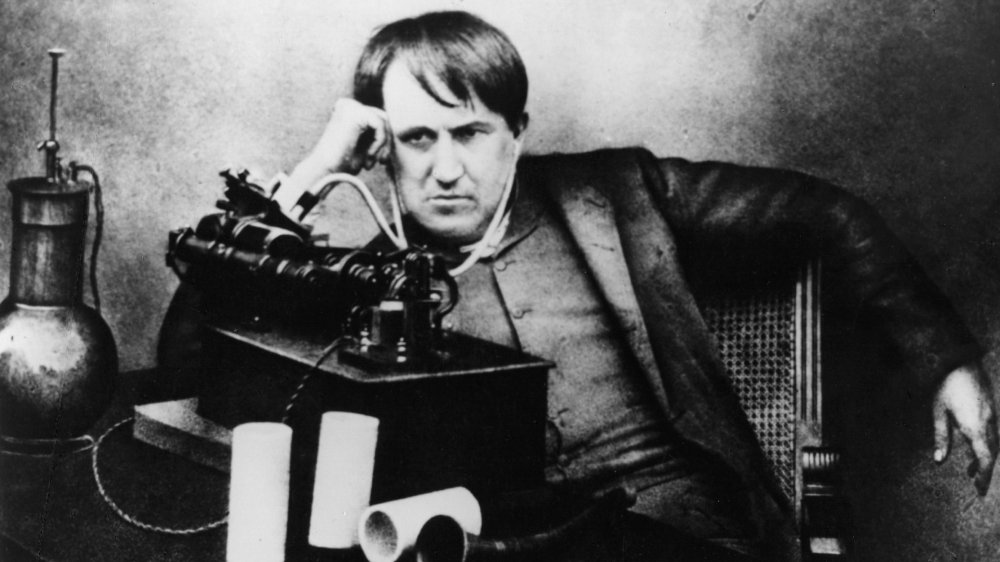How Thomas Edison's Predictions About Steel Were Way Off
Thomas Edison occupies hallowed ground in our popular history, in the stories we like to tell ourselves. The light bulb now symbolizes all our bright ideas, and Edison invented so many gadgets now deemed essential to everyday life that his legacy drove Homer Simpson to a mid-life crisis. We lionize the light bulb's "inventor" as though he were the sole brain behind electric illumination, but the truth is that it was the brainchild of numerous tinkerers collaborating tirelessly so that we could say "let there be light" on the way to the bathroom at night. As Casey Cep wrote in The New Yorker, Edison's gift as an inventor was not a series of 1,093 lightning bolt moments of sheer problem-solving genius, but rather his knack for finding "solutions in need of modification."
Although his impact on modern life a century later is undeniable, not every idea he flung at the wall ended up sticking. (In fact, Edison's first invention failed completely.) Like a true visionary, many of his predictions about the future can now be seen as prophetic, but they weren't all zingers. As National Geographic noted, his predictions a century ago about air travel, mass production, electric trains, and smartphones (kinda) were more or less on the mark. His forecast about the role that steel would play in our lives, however, ended up a cold, lifeless heap in the slush pile of attempted augury.
Edison predicted all-steel homes
According to Inverse, Edison wrote in 1911 that "the house of the next century will be furnished from basement to attic with steel." He saw steel manufacturing evolving to produce a product that was lighter, so much so that it would "be as easy to move a sideboard as it I today to lift a drawing room chair." In his weird, now retrofuture vision of the 21st century, he had babies being rocked to sleep in steel cradles, dads eating dinner at steel dining tables, and mothers' boudoirs "sumptuously equipped with steel furnishings, converted by cunning varnishes to the semblance of rosewood, or mahogany, or any other wood her ladyship fancies."
Why was Edison so head-over-heels about steel? Admittedly, the alloy was heading up American industry at the time. According to U.S. History Scene, steel was the driving force behind what came to be known as the second industrial revolution. Andrew Carnegie and the recently founded U.S. Steel Corporation were using the revolutionary material to build bridges, buildings, and railroads all over the country. But the metal's potential is only part of the story.
Edison's steel predictions may have had something to do with the fact he had a personal stake in the industry, as noted in another Inverse article. Considering the gargantuan amount of money Thomas Edison was worth when he died, there's probably something to this theory.
Other Edison predictions also were a bit off the mark
Now that we're all living in the future that Thomas Edison predicted back at the dawn of the 20th century, let's take a look at the other predictions that Edison got wrong. For example, according to Open Culture, Edison thought that we would soon shed our silly obsession with gold. He thought shiny stuff had "but a few years to live." Revealing the kooky side of the inventor, his soothsaying about gold sounded more like the wild dreams of an alchemist than the educated guess of a scientist. "We are already on the verge of discovering the secret of transmuting metals," he said, going on to speculate "magical days to come" in which we'd be sailing the seas in golden ocean liners and riding around in golden taxicabs.
In what was probably his most unfortunately incorrect prediction, Edison foresaw the eradication of poverty within 100 years, thanks to technology. "Poverty was for a world that used only its hands," he said. Since people had begun to "use their brains" (he must have underestimated how many), "there will be no poverty in the world a hundred years from now." In his defense, there are a number of things that were normal 100 years ago that are strange now, but not all of his predictions became reality — yet. Fingers crossed for those golden cars.


